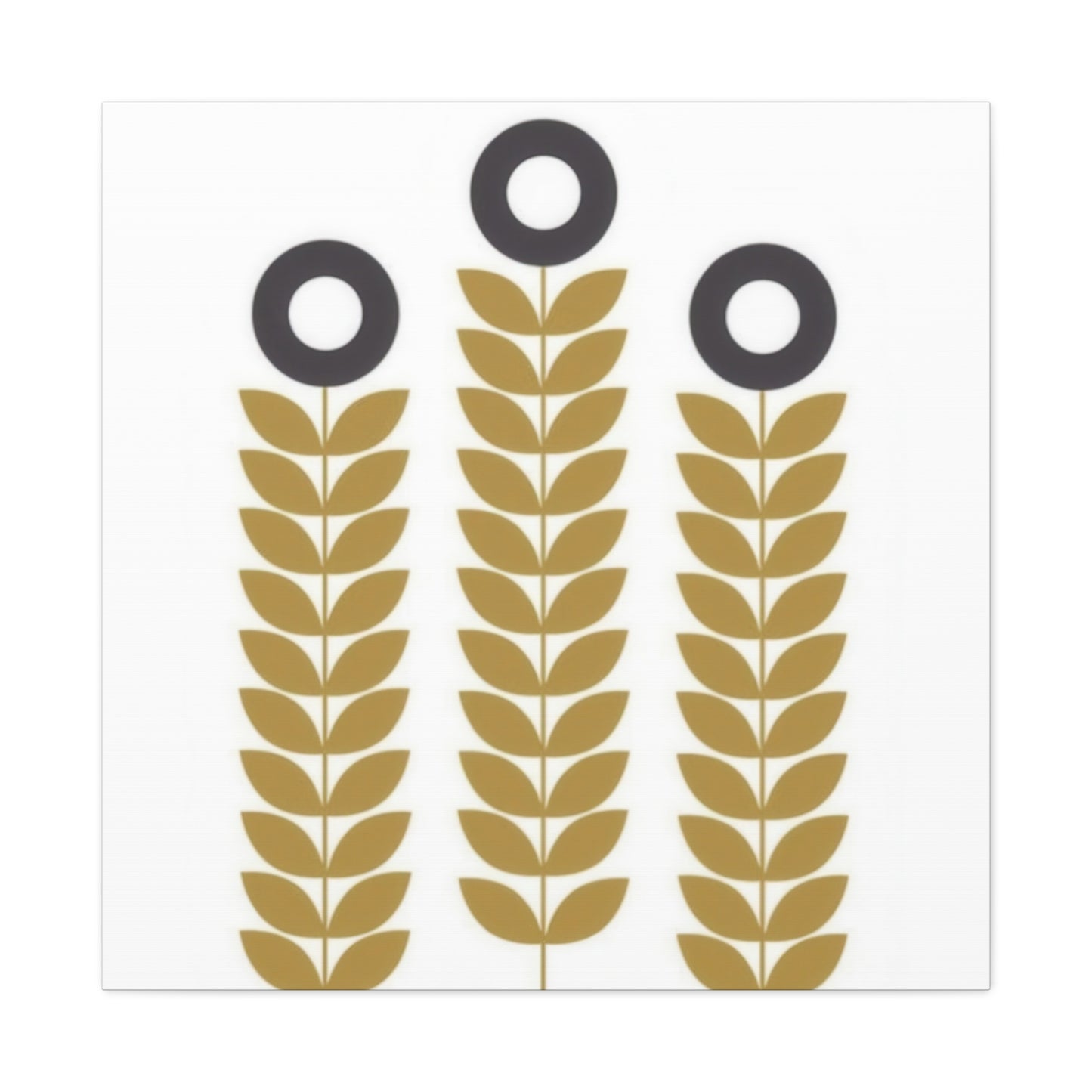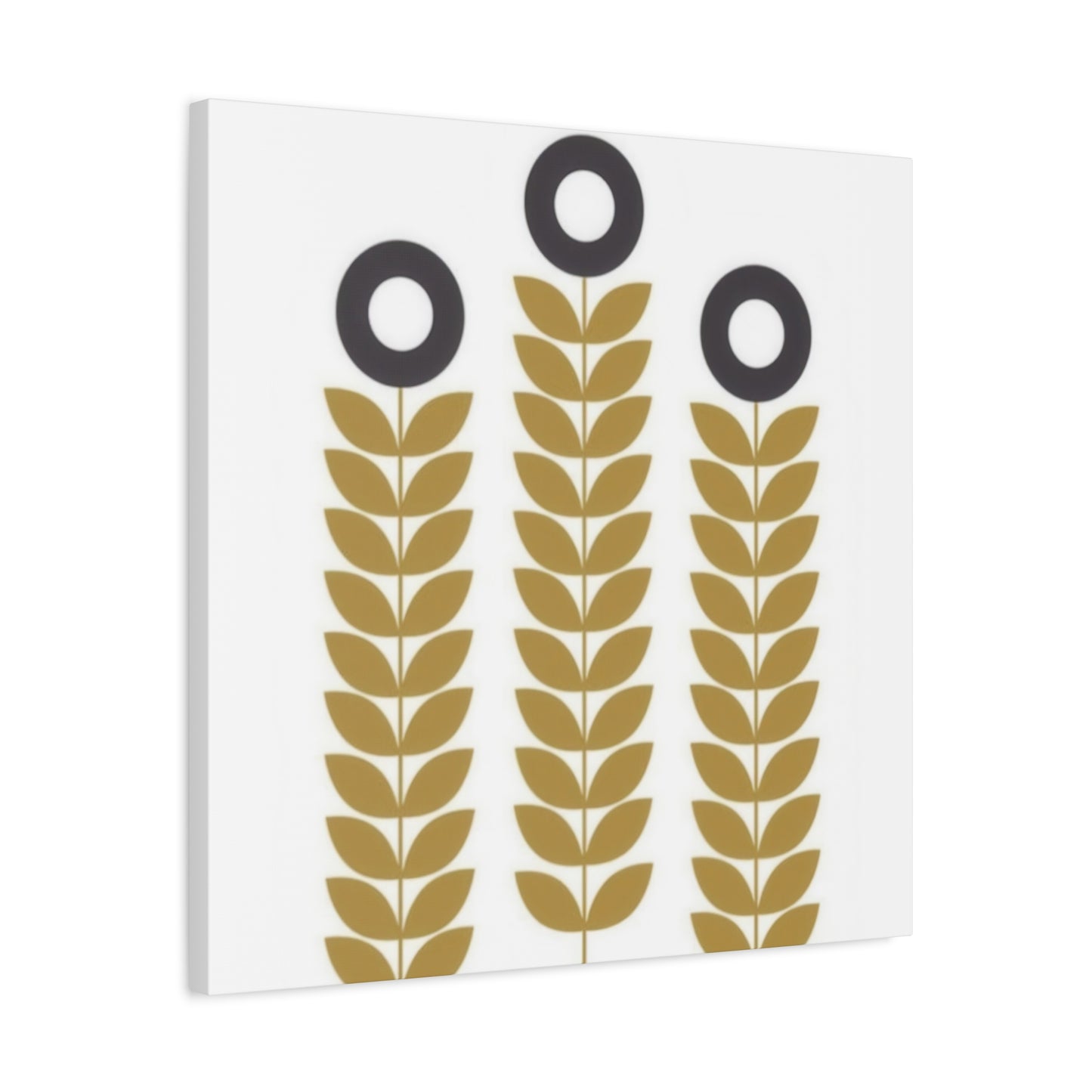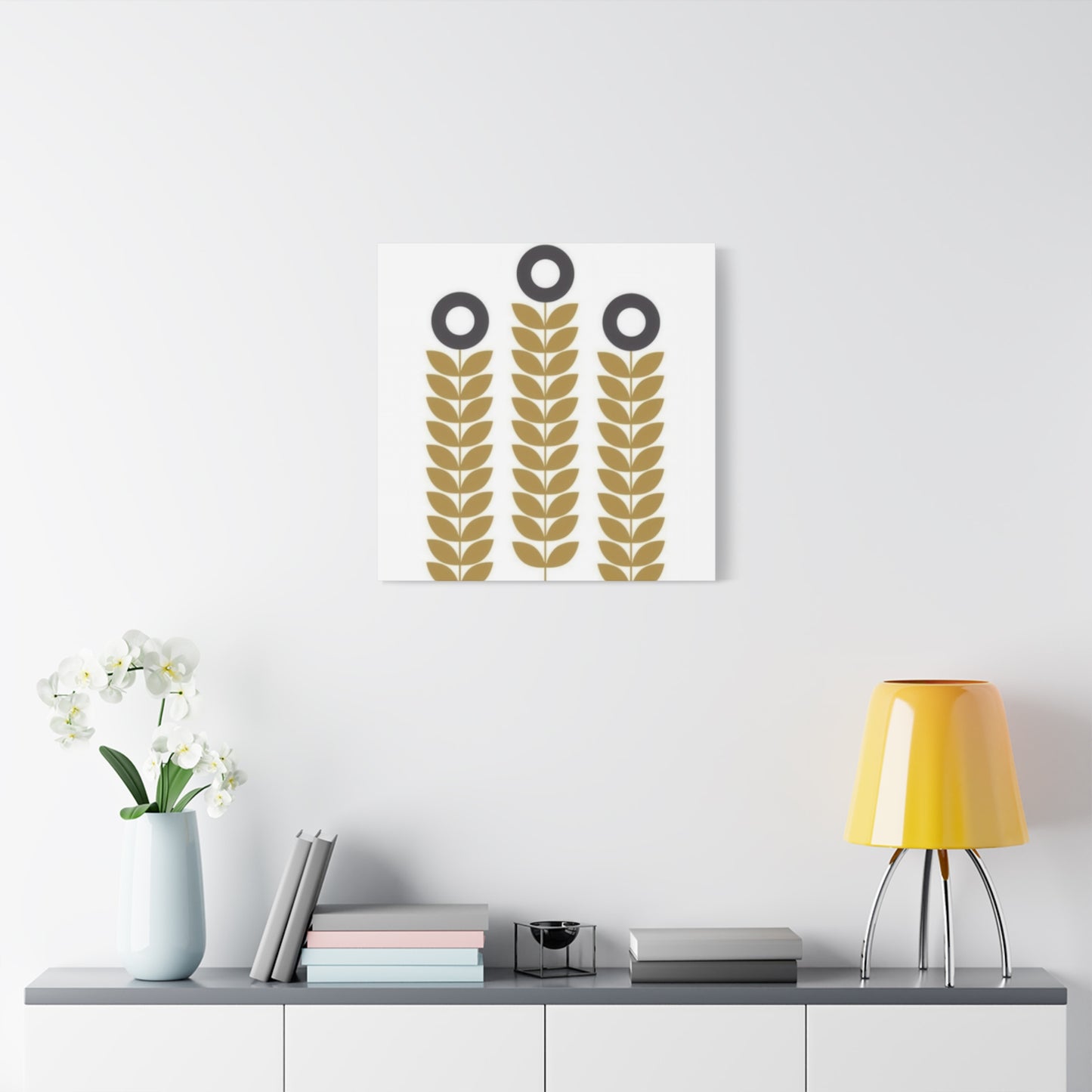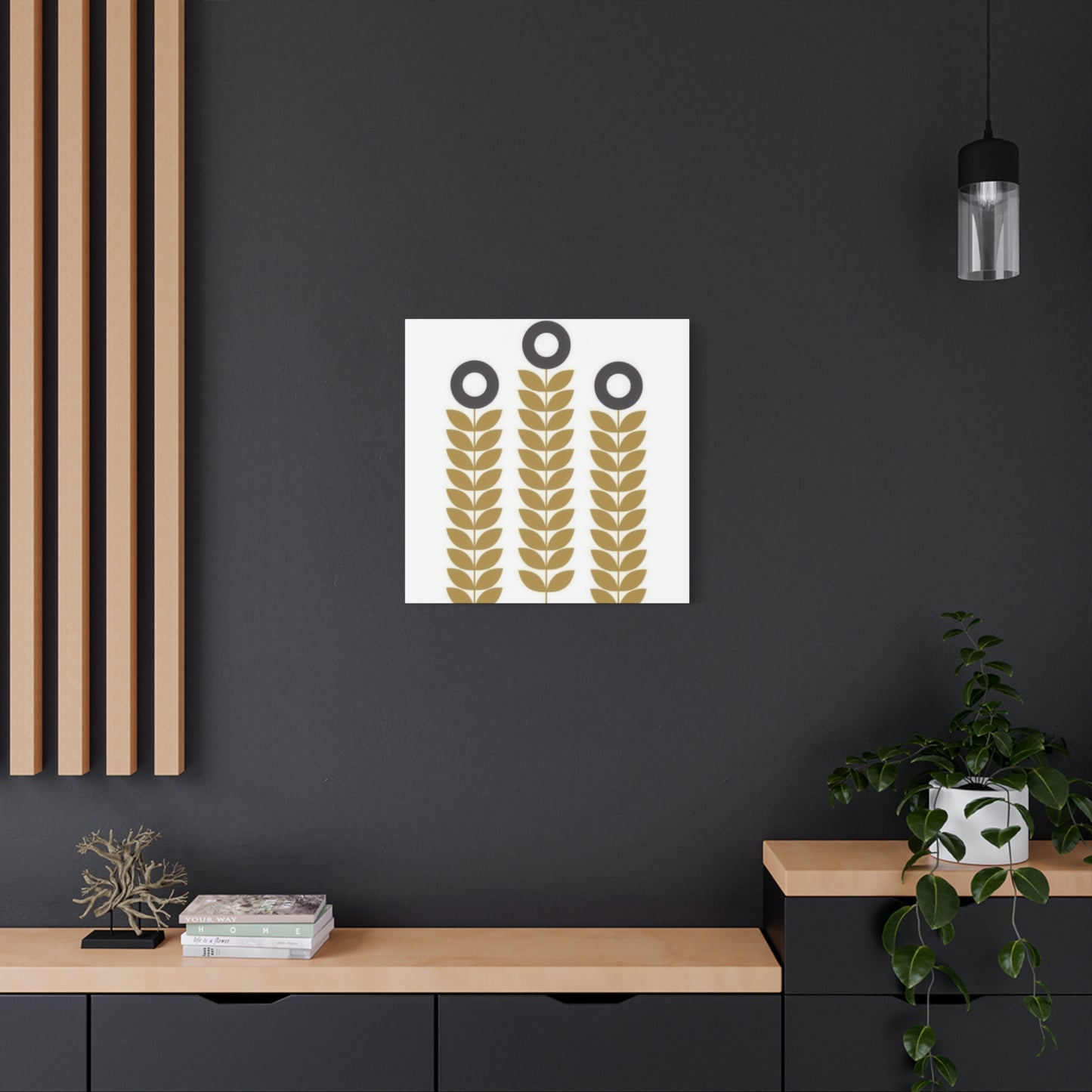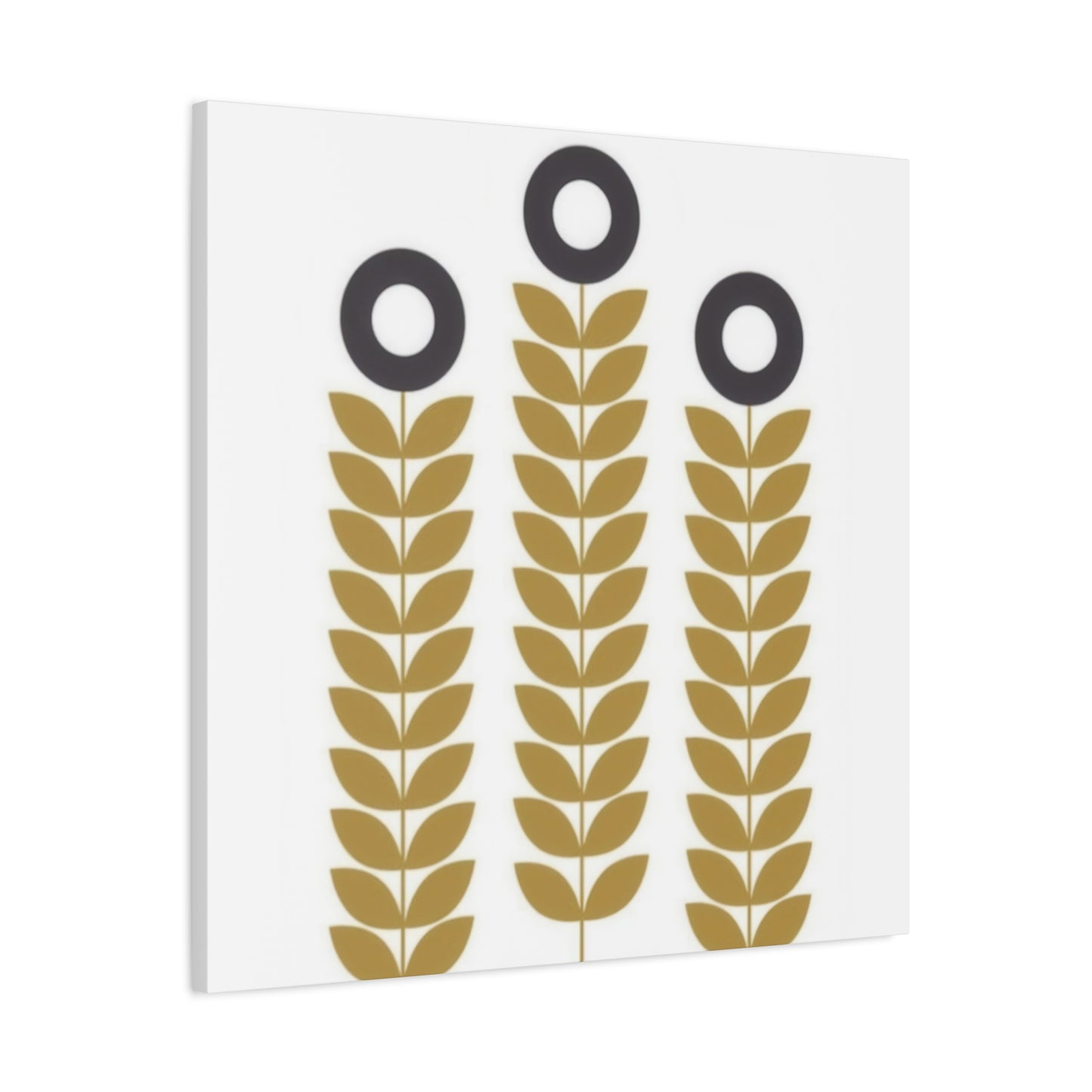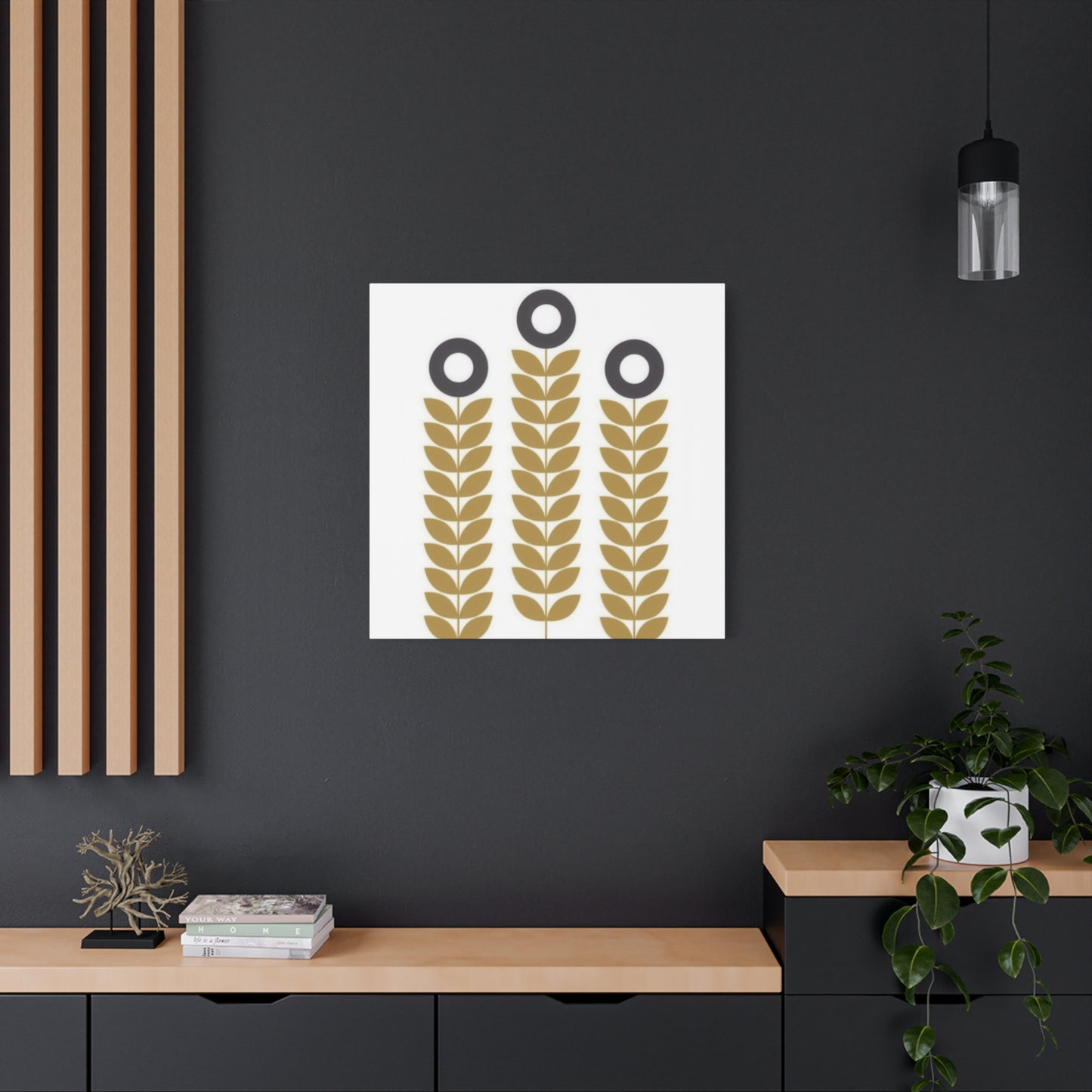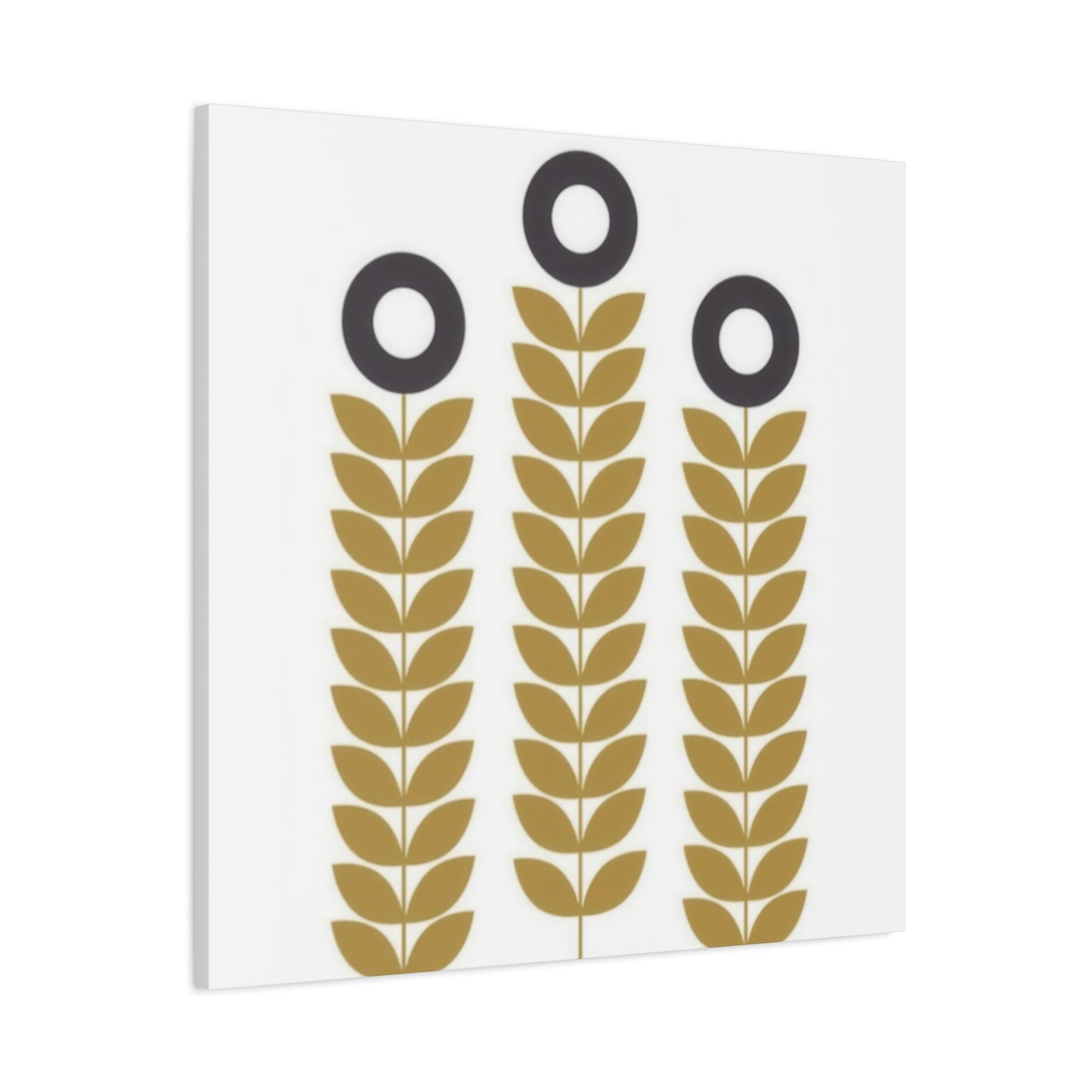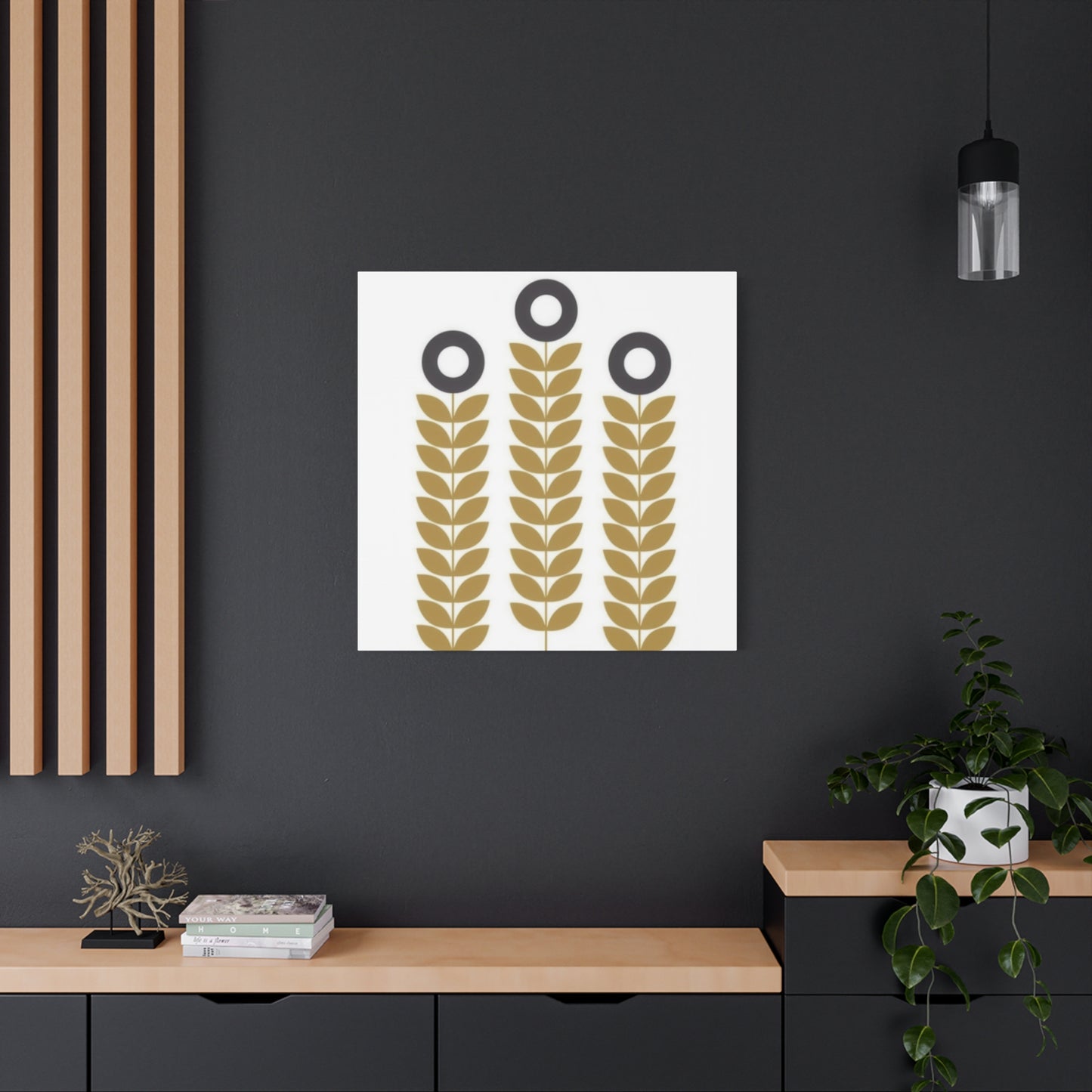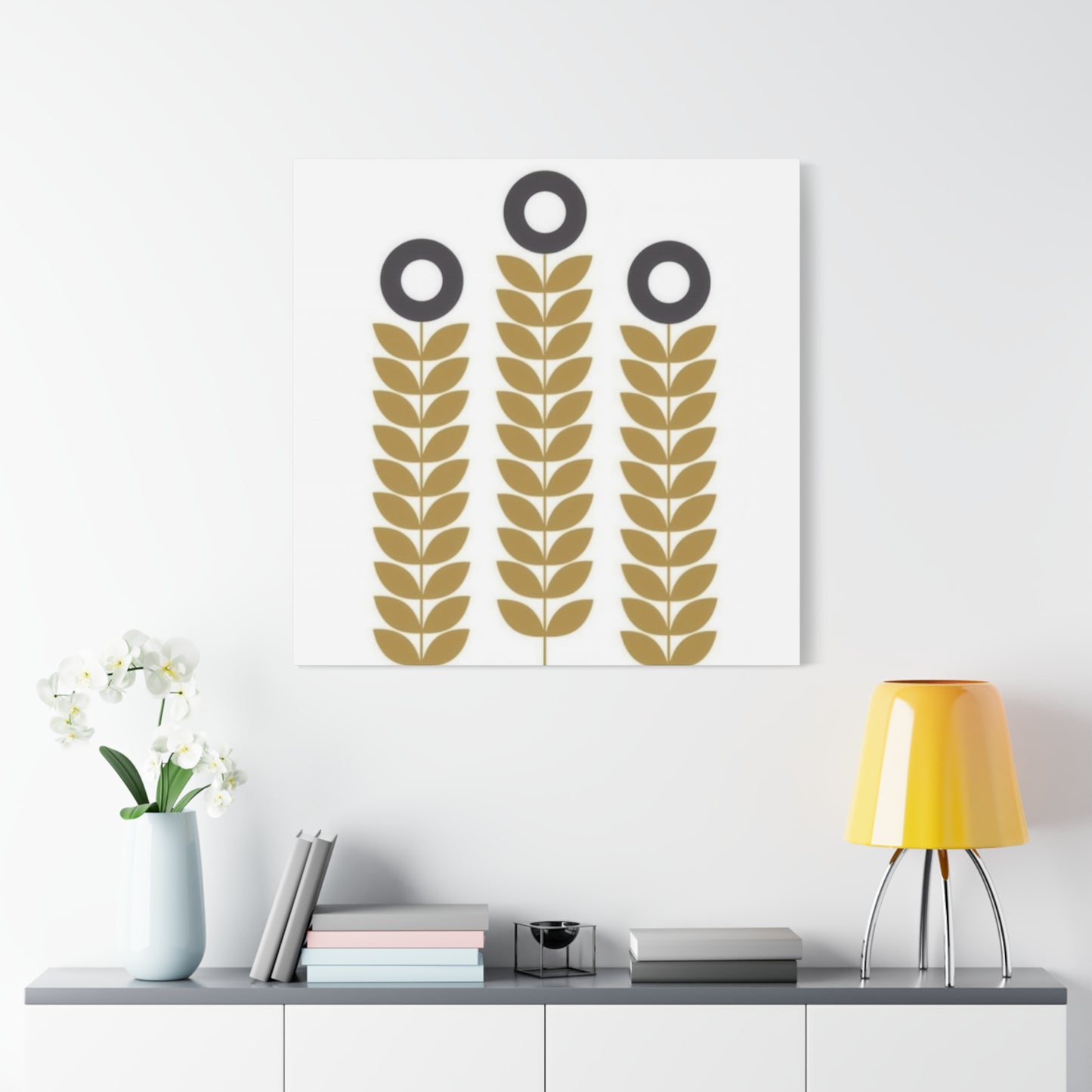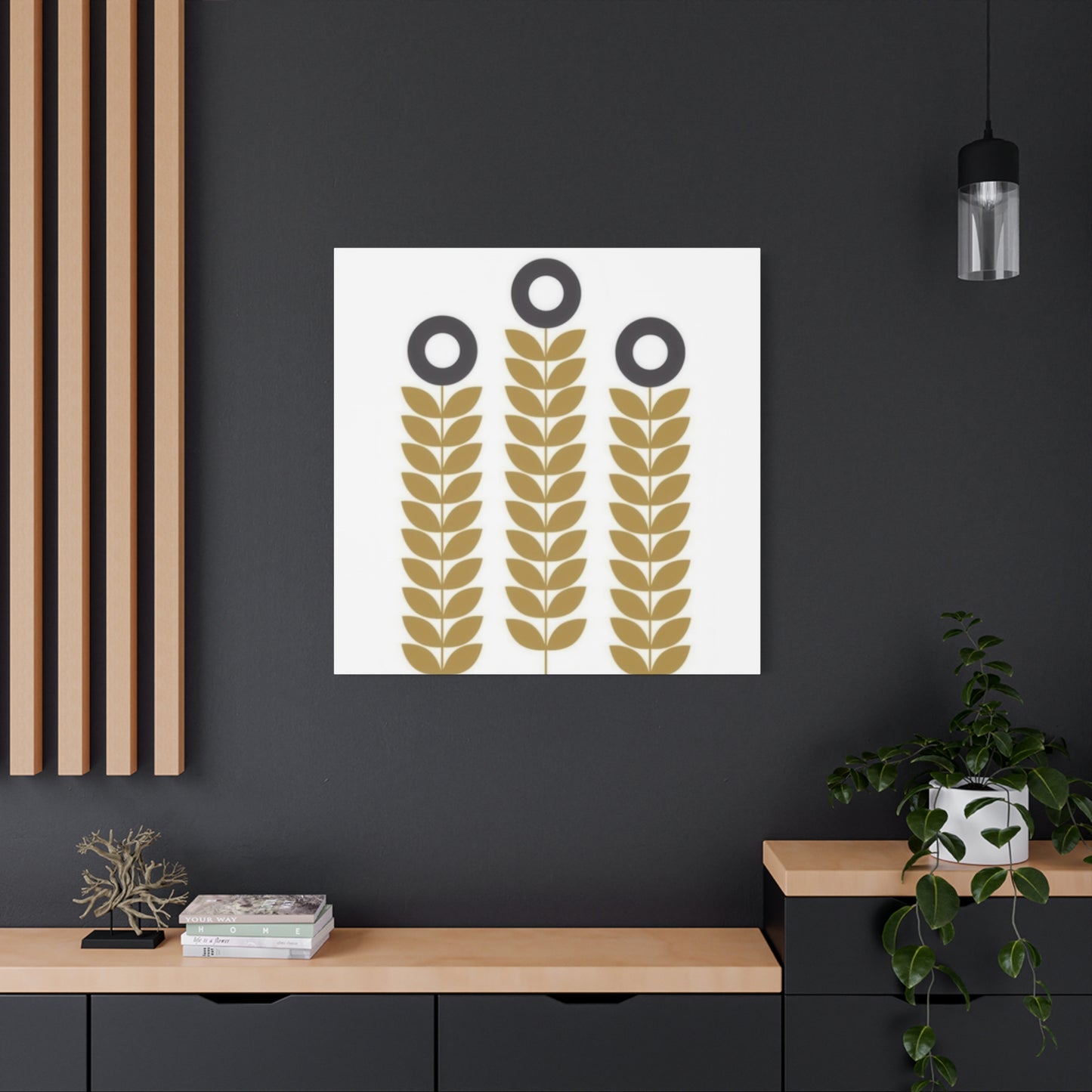Blurring the Lines Between Nature and Art: The Fascinating World of Abstract Flower Wall Art
Abstract flower paintings have emerged as one of the most captivating forms of contemporary wall decoration, offering homeowners and art enthusiasts a unique blend of natural inspiration and artistic interpretation. These pieces transcend traditional botanical representations, creating visual experiences that speak to both the heart and the aesthetic sensibilities of modern living spaces. The world of abstract floral artwork represents a fascinating intersection where nature's organic beauty meets human creativity, resulting in pieces that can transform any room from ordinary to extraordinary.
The increasing popularity of abstract flower wall art reflects a broader cultural shift toward appreciating art that balances recognizability with imagination. Unlike photorealistic depictions or completely non-representational abstract works, abstract floral pieces occupy a sweet spot that allows viewers to connect with familiar natural forms while enjoying the freedom and emotional expression that abstraction provides. This unique positioning makes them accessible to a wide audience while still offering the sophistication and depth that serious art collectors seek.
When you incorporate abstract flower paintings into your living environment, you're not simply adding decoration to your walls. You're introducing elements that can influence mood, create focal points, and establish the overall atmosphere of a space. These artworks serve as conversation starters, sources of daily inspiration, and visual anchors that tie together various design elements within a room. The versatility of abstract floral art means it can adapt to multiple interior design styles, from ultra-modern minimalist spaces to more traditional settings that benefit from a contemporary update.
The appeal of these artworks lies partly in their ability to capture the essence of flowers without being constrained by botanical accuracy. Artists working in this genre have the freedom to exaggerate colors, distort proportions, simplify forms, or emphasize particular aspects of floral subjects that resonate with their artistic vision. This creative liberty results in pieces that can be simultaneously recognizable and surprising, familiar yet fresh. The emotional impact of abstract flower art often exceeds that of more literal representations because the abstraction allows viewers to project their own feelings and interpretations onto the work.
How Abstract Floral Wall Decoration Enhances Sophistication
Abstract floral wall decoration possesses an inherent quality that elevates the sophistication level of any interior space. This enhancement occurs through several interconnected mechanisms that work together to create an atmosphere of refined taste and aesthetic awareness. When you select abstract flower artwork for your walls, you're making a statement about your appreciation for both natural beauty and artistic innovation, demonstrating a design sensibility that looks beyond conventional decorating choices.
The elegance that abstract floral pieces bring to a room stems from their ability to suggest rather than dictate. Unlike highly detailed realistic paintings that leave little to the imagination, abstract interpretations of flowers invite viewers to engage more actively with the artwork. This engagement creates a more dynamic relationship between the art and the observer, adding layers of meaning and personal connection that evolve over time. The sophisticated viewer appreciates this depth, recognizing that the artwork offers new discoveries with repeated viewings rather than revealing everything at first glance.
Color plays a crucial role in how abstract flower wall art contributes to elegance. Many artists working in this genre employ carefully considered color palettes that range from subtle and harmonious to bold and dramatic, but always with intentionality. The colors in abstract floral works often echo or complement the hues found in the surrounding interior design, creating visual coherence that ties the room together. When executed skillfully, this color coordination appears effortless and natural, hallmarks of truly elegant design. The interplay between warm and cool tones, the balance between saturated and muted colors, and the strategic use of contrast all contribute to the sophisticated atmosphere that abstract flower art creates.
The compositional structure of abstract floral paintings also contributes significantly to their elegant character. Professional artists understand principles of visual balance, rhythm, and focal point creation that guide the eye through the artwork in pleasing ways. These compositional strategies create a sense of order within the apparent spontaneity of abstract expression, satisfying our innate human desire for both variety and coherence. The sophisticated viewer recognizes and appreciates this underlying structure, even if only subconsciously, and responds to the sense of artistic mastery it represents.
Texture adds another dimension to the elegance of abstract flower wall art. Many contemporary artists working in this genre employ techniques that create physical texture on the canvas surface, whether through thick applications of paint, mixed media elements, or other textural additions. This dimensionality transforms the artwork from a purely visual experience into something more tangible and present, adding richness and depth that flat reproductions cannot match. The play of light across textured surfaces creates subtle variations in appearance throughout the day, ensuring that the artwork remains visually interesting and dynamic rather than static.
The scale of abstract floral artwork significantly impacts its contribution to interior elegance. Large-scale pieces make bold statements that command attention and establish themselves as focal points around which other design elements orbit. These substantial works demonstrate confidence and commitment, qualities associated with sophisticated design choices. Conversely, carefully curated collections of smaller abstract floral pieces can create gallery wall arrangements that showcase curatorial skill and aesthetic discernment. Both approaches can achieve elegance, but through different mechanisms that suit different spaces and design objectives.
Abstract flower wall decoration also introduces an element of cultural sophistication through its connection to the broader art world. By choosing abstract floral works, homeowners align themselves with contemporary art movements and demonstrate awareness of current aesthetic trends. This cultural literacy adds an intangible but significant dimension to the elegance factor, as it suggests engagement with ideas and conversations happening in galleries, museums, and design publications. The artwork becomes not just a beautiful object but a marker of cultural participation and aesthetic education.
Incorporating Natural Elements Through Abstract Floral Artwork
The incorporation of natural elements into interior spaces has long been recognized as essential for creating environments that support human wellbeing and comfort. Abstract floral artwork serves as a sophisticated method for bringing nature indoors, offering the psychological benefits of natural imagery without the maintenance requirements or limitations of live plants. This approach to integrating nature into living spaces represents a thoughtful compromise between our biophilic needs and the practical realities of contemporary indoor life.
Abstract flower art captures the vitality and energy of living plants while translating these qualities into a permanent, unchanging form that maintains its visual appeal indefinitely. Unlike fresh flowers that wilt and fade or potted plants that require regular care, abstract floral paintings provide a constant source of nature-inspired beauty that never demands watering, pruning, or replacement. This permanence doesn't diminish the sense of connection to nature that these artworks provide; rather, it allows that connection to be reliable and consistent, always available when you need the calming or uplifting effects that natural imagery can provide.
The color palettes commonly found in abstract flower paintings often draw directly from nature's own schemes, incorporating the vibrant hues of blooming gardens, the subtle tones of early spring growth, or the rich colors of autumn foliage. These natural color combinations have evolved over millions of years to be visually pleasing and psychologically comfortable for humans, as our species developed in close relationship with flowering plants. By bringing these color relationships into interior spaces through abstract floral art, we create environments that feel inherently right and comfortable, even if we can't consciously articulate why.
Abstract interpretations of flowers can capture qualities of natural growth and organic form that resonate with our deep-seated responses to living things. The curves, spirals, and flowing lines that characterize much abstract floral art echo the growth patterns found throughout nature, from the unfurling of new leaves to the spiral arrangement of petals in a flower head. These organic forms contrast with the predominantly rectilinear geometry of built environments, providing visual relief and a sense of balance between the natural and the constructed. This balance is crucial for creating interior spaces that feel complete and harmonious rather than sterile or overly rigid.
The representation of flowers in abstract form can also evoke the temporal aspects of nature, such as growth, blooming, and seasonal change. Some abstract floral works capture the explosive energy of spring blossoms bursting forth, while others convey the gentle fading of summer flowers or the seeds preparing for next year's growth. These temporal suggestions connect us to natural cycles and rhythms that our modern, climate-controlled indoor lives often obscure. By including abstract flower art that hints at these natural processes, we maintain a symbolic connection to the passage of seasons and the renewal inherent in natural systems.
Light interaction represents another way abstract flower wall art brings nature indoors. Natural settings feature constantly changing light conditions as the sun moves across the sky, clouds pass overhead, and seasons progress. Quality abstract floral paintings can capture and respond to changing light conditions in interior spaces, with colors and textures appearing different at various times of day or under different lighting conditions. This dynamic quality mimics the variability of outdoor natural settings, preventing the static feeling that can develop in spaces where nothing ever changes.
The scale relationships in abstract floral artwork can also evoke natural experiences. Large-scale pieces that present flowers or floral elements in sizes much larger than life can recreate the experience of being immersed in nature, surrounded by blooming plants. This sense of immersion provides psychological benefits similar to actually spending time in natural settings, including stress reduction and mental restoration. Alternatively, pieces that depict multiple flowers or floral elements in arrangements can suggest the abundance and diversity of natural ecosystems, reminding us of the richness and complexity that characterizes living systems.
Abstract Blooms: A Contemporary Interpretation of Botanical Design
The evolution of floral design from traditional botanical illustration to contemporary abstract interpretation represents one of the most fascinating trajectories in art history. Abstract flowers provide a modern twist on floral design that speaks to current aesthetic sensibilities while maintaining connections to centuries of artistic engagement with botanical subjects. This contemporary approach liberates flowers from their documentary function, allowing them to serve purely aesthetic and emotional purposes that resonate with today's design-conscious audiences.
Traditional floral design emphasized accuracy, detail, and scientific classification, producing beautiful works that served educational and documentary purposes alongside their aesthetic functions. Contemporary abstract interpretations abandon these utilitarian objectives in favor of pure artistic expression. This shift reflects broader cultural changes in how we relate to nature, moving from a primarily classificatory and controlling relationship to one that emphasizes experience, emotion, and subjective response. Abstract flower art embodies this new relationship, presenting nature not as something to be catalogued and understood but as something to be felt and experienced.
The formal innovations that characterize abstract floral art distinguish it sharply from more traditional approaches. Contemporary artists working with floral subjects employ techniques borrowed from various abstract art movements, including color field painting, gestural abstraction, geometric abstraction, and mixed media assemblage. These techniques transform recognizable floral forms into vehicles for exploring color relationships, compositional dynamics, textural possibilities, and emotional expression. The resulting works may retain varying degrees of recognizability, from pieces where flowers are clearly identifiable despite stylization to works where only hints and suggestions of floral forms remain.
Color usage in contemporary abstract floral design often departs dramatically from naturalistic representation. Artists may employ colors never found in actual flowers, create unexpected color combinations, or use color in non-representational ways that prioritize aesthetic impact over botanical accuracy. This freedom with color allows abstract flower art to adapt to diverse interior design schemes and personal preferences in ways that more realistic representations cannot. A room decorated in cool blues and grays can accommodate abstract floral art that interprets flowers in those same tones, creating visual harmony that would be impossible with naturalistically colored flower paintings.
The simplification and distillation that characterize much contemporary abstract floral art align perfectly with modernist design principles that emphasize essential forms and reject unnecessary ornamentation. This aesthetic compatibility makes abstract flower art particularly well-suited to contemporary interiors that favor clean lines, uncluttered spaces, and carefully edited decorative elements. Where traditional floral paintings might feel too busy or decorative for minimalist modern spaces, abstract interpretations can provide the warmth and human touch that prevent such spaces from feeling cold or institutional while maintaining the visual simplicity that the overall design requires.
Contemporary abstract floral design also reflects current interests in interdisciplinary approaches and boundary-crossing creativity. Many artists working in this genre draw inspiration from sources far beyond traditional botanical art, incorporating influences from fashion, graphic design, street art, digital media, and other contemporary visual cultures. This eclectic approach results in fresh, unexpected interpretations of floral subjects that feel thoroughly current and relevant to contemporary audiences. The cross-pollination of ideas and techniques from various creative fields ensures that abstract flower art remains dynamic and evolving rather than becoming stagnant or formulaic.
The emotional accessibility of abstract flowers represents another aspect of their modern appeal. While some forms of abstract art can feel intellectually demanding or emotionally distant, abstract floral work maintains an approachable quality through its connection to universally recognized natural forms. This accessibility doesn't imply superficiality; rather, it creates an entry point that allows viewers to engage with abstract artistic techniques and concepts through the familiar framework of floral imagery. This quality makes abstract flower art particularly valuable for people beginning to explore contemporary art, as it provides a bridge between the comfort of representational art and the challenges and rewards of more purely abstract work.
Abstract Floral Artwork in Contemporary Residences
Contemporary homes present unique design challenges that abstract floral artwork addresses with remarkable effectiveness. The open floor plans, neutral color schemes, and minimalist furnishing approaches that characterize much modern residential design can sometimes result in spaces that feel cold or impersonal. Abstract flower art introduces warmth, color, and organic elements that humanize these spaces without compromising their contemporary character. This ability to bridge the gap between aesthetic purity and livable comfort explains much of the success that abstract floral artwork enjoys in modern home design.
The neutral backgrounds common in contemporary interiors provide ideal canvases for abstract flower wall art to make strong visual statements. White walls, gray tones, and natural wood finishes all serve as excellent backdrops that allow colorful abstract floral pieces to stand out and command attention. This relationship between neutral architectural elements and vibrant artwork creates a balanced visual hierarchy where the space itself provides calm and order while the art introduces energy and personality. This balance prevents interiors from feeling either chaotic and overwhelming or sterile and uninviting.
Abstract floral artwork also responds well to the lighting conditions typically found in contemporary homes. Large windows and open plans that maximize natural light create ideal viewing conditions for appreciating the subtle color variations and textural qualities of quality abstract flower paintings. The changing natural light throughout the day reveals different aspects of the artwork, ensuring that pieces never become visually stale or predictable. In the evening, contemporary homes often employ varied artificial lighting schemes that can dramatically transform the appearance of abstract floral art, creating essentially different viewing experiences at different times of day.
The scale considerations in contemporary residential design align well with current trends in abstract flower art production. Modern homes often feature large, unbroken wall expanses that benefit from substantial artworks that can hold their own in spacious environments. Many artists working in abstract floral styles create large-scale pieces specifically designed to serve as focal points in contemporary interiors. These substantial works prevent modern spaces from feeling empty or underfurnished while maintaining the open, airy quality that makes contemporary design appealing.
Contemporary homes often incorporate architectural features like floating stairs, exposed structural elements, or unique ceiling treatments that could potentially compete with artwork for visual attention. Abstract flower art handles this potential competition gracefully, as its organic forms and flowing lines provide pleasing contrast to the geometric precision of architectural elements. Rather than fighting for dominance, abstract floral artwork and contemporary architecture can establish complementary relationships where each enhances the other's qualities. The softness of floral forms balances architectural hardness, while the structure of the built environment provides context that makes the freedom of abstract art even more noticeable and appealing.
The lifestyle considerations that drive contemporary home design also favor abstract floral artwork. Modern homeowners often prioritize low-maintenance living, seeking beauty and comfort without excessive upkeep demands. Abstract flower paintings deliver constant visual appeal without requiring the care that live plants demand or the periodic replacement that fresh flowers necessitate. This convenience factor shouldn't be underestimated, as it allows busy contemporary residents to maintain beautiful, nature-inspired interiors without adding tasks to already full schedules.
Contemporary homes frequently serve multiple functions, with spaces adapting throughout the day from private family areas to venues for entertaining guests or even professional home offices. Abstract floral artwork accommodates this functional flexibility beautifully, maintaining appropriate aesthetic character across different usage scenarios. The same abstract flower painting that provides a calming backdrop for morning coffee also creates an interesting talking point when guests visit and maintains professionalism during video conference calls. This versatility makes abstract floral art an excellent investment for homes where spaces must serve varied purposes.
Flowing Grace of Abstract Floral Wall Decoration
The fluid beauty inherent in abstract flower wall art represents one of its most compelling qualities, distinguishing it from more rigid or geometric forms of abstract expression. This fluidity manifests in multiple dimensions, from the organic curves and flowing lines that characterize many abstract floral compositions to the sense of movement and growth that effective pieces convey. The flowing quality of abstract flower art creates visual experiences that feel alive and dynamic rather than static and fixed, contributing to interiors that maintain visual interest over time.
The organic forms found in flowers naturally lend themselves to fluid artistic interpretation. Petals curve and overlap, stems arc and intertwine, leaves unfurl in spirals and waves. Artists working in abstract floral styles emphasize and exaggerate these natural fluid qualities, creating compositions that guide the eye in sweeping movements across the canvas. This visual movement prevents monotony and creates a sense of energy and vitality that more static compositions lack. The flowing lines and curves characteristic of abstract flower art also create a sense of harmony and grace that viewers find inherently pleasing, as these forms echo patterns found throughout nature and even within our own bodies.
Color transitions in abstract floral artwork often exhibit fluid, gradual changes that mirror the subtle color variations found in actual flowers. Rather than employing hard edges and abrupt color shifts, many abstract flower artists use techniques that allow colors to blend, merge, and flow into one another. These gradual transitions create dreamy, atmospheric effects that can make abstract floral pieces feel ethereal and transcendent. The fluidity of color handling in quality abstract flower art requires significant technical skill, as creating smooth, controlled transitions while maintaining color intensity and clarity presents genuine artistic challenges.
The suggestion of movement in abstract floral art can evoke natural processes like growth, blooming, and the response of flowers to wind and weather. Some abstract flower paintings capture the explosive energy of blossoms opening, while others convey the gentle swaying of flowers in a breeze or the graceful drooping of petals beginning to fade. These movement suggestions connect viewers to temporal processes and natural rhythms, adding narrative dimension to what might otherwise be purely formal arrangements of color and shape. The implied movement also prevents abstract floral art from feeling too settled or complete, maintaining a sense of potential and becoming that keeps the work feeling fresh.
Compositional flow represents another aspect of fluid beauty in abstract flower wall art. Skilled artists construct compositions that lead the viewer's eye on journeys across and through the picture plane, creating visual rhythms that feel musical in their pacing and variation. Elements may cluster and disperse, build to crescendos and retreat to quiet moments, establish themes that echo and develop throughout the composition. This compositional sophistication elevates abstract floral art beyond mere decoration, making it capable of delivering complex aesthetic experiences that reward sustained attention.
The fluid beauty of abstract flower art also manifests in its adaptability to different viewing contexts and viewer moods. Unlike more aggressive or demanding forms of abstract art, fluid abstract floral pieces can accommodate various mental states and occasions. They can provide gentle, calming visual experiences when you need relaxation and comfort, or they can offer stimulating complexity when you're in the mood for more active aesthetic engagement. This flexibility reflects the fluid nature of the work itself, which doesn't insist on a single correct mode of viewing but instead adapts to what viewers bring to the encounter.
Technically, the fluid quality in abstract flower art often results from specific artistic techniques and approaches. Watercolor techniques, for example, naturally produce flowing, organic effects as pigments blend on wet paper. Acrylic pouring methods create unpredictable fluid patterns that artists can guide but never fully control. Oil painting techniques like alla prima or wet-on-wet application allow colors to mix directly on the canvas, producing fluid transitions and organic blends. Even when working with more controlled media, artists can employ gestural, flowing brush strokes or other mark-making approaches that maintain fluidity and movement. The technical means may vary, but the resulting fluid beauty remains a defining characteristic of compelling abstract flower art.
Abstract Blooms: A Renewed Approach to Traditional Botanical Artwork
Abstract floral artwork represents a significant departure from classic botanical designs while maintaining meaningful connections to the long tradition of floral art. This balance between innovation and tradition makes abstract flowers particularly appealing to viewers who appreciate both historical artistic precedents and contemporary creative expression. By taking a fresh approach to floral subjects, abstract artists demonstrate that even thoroughly explored themes can yield new insights and aesthetic experiences when approached with imagination and contemporary sensibilities.
Classical floral designs emphasized botanical accuracy, decorative beauty, and often symbolic meaning. From Dutch Golden Age flower paintings to Victorian botanical illustrations, traditional floral art served multiple purposes ranging from scientific documentation to religious symbolism to simple celebration of natural beauty. Abstract interpretations honor this rich heritage while liberating floral subjects from their documentary and symbolic functions. This liberation allows contemporary artists to explore flowers purely as aesthetic objects and vehicles for expressing color, form, composition, and emotion. The resulting works may bear little superficial resemblance to their classical predecessors, yet they continue the fundamental human impulse to engage creatively with floral beauty.
The reductionist approach common in abstract floral art strips away details and specificities that characterize classical botanical representation, distilling floral subjects to their essential qualities. This distillation process requires artists to identify what makes flowers visually and emotionally compelling at the most fundamental level. Is it the curves and spirals of petals? The radial symmetry of blooms? The contrast between the delicacy of flowers and the robustness of stems? By isolating and emphasizing these essential qualities, abstract artists create works that may be more purely floral in some sense than detailed representations that include every botanical particular. This paradox makes abstract floral art simultaneously more minimal and more essential than its classical counterparts.
Color relationships receive renewed emphasis in abstract approaches to floral design. Classical flower paintings often employed naturalistic color schemes that accurately represented the hues of specific flowers. Abstract interpretations free artists to explore color relationships for their own sake, using floral forms as structures on which to build color studies and experiments. This focus on color as an independent aesthetic element aligns abstract floral art with major movements in twentieth-century painting that prioritized color's emotional and perceptual effects over its representational functions. The result is work that uses flowers as starting points for color exploration rather than subjects requiring accurate chromatic depiction.
The gestural freedom found in much abstract floral art contrasts sharply with the controlled, precise techniques of classical botanical illustration. Where traditional floral art valued careful rendering and meticulous attention to detail, abstract approaches often celebrate spontaneity, accident, and the visible traces of the artist's hand and body in motion. This shift reflects broader changes in artistic values over the twentieth century, as various avant-garde movements challenged academic precision in favor of directness, authenticity, and expressive immediacy. Abstract floral art that embraces gestural freedom maintains connection to recognizable subjects while participating in these broader artistic conversations about the nature and purpose of art-making.
Contemporary abstract floral art also benefits from expanded material and technical possibilities unavailable to classical flower painters. Modern acrylic paints offer color intensities and working properties different from traditional oil paints. Mixed media approaches allow combination of painting with collage, drawing, printing, and other techniques in single works. Digital tools enable creation and manipulation of imagery in ways impossible with traditional media. These expanded possibilities allow contemporary abstract floral artists to take approaches to their subjects that would have been technically impossible for their classical predecessors, resulting in works that are unmistakably products of their time while addressing timeless subjects.
The fresh take that abstract art provides to floral subjects also addresses potential viewer fatigue with overly familiar imagery. Flowers have been depicted in art for thousands of years, and certain approaches to floral subjects have become clichéd through repetition. Abstract interpretation provides a remedy for this familiarity, presenting flowers in ways that surprise and challenge viewers rather than confirming expectations. This renewal of visual interest demonstrates the power of abstraction to refresh our perception of even the most familiar subjects, revealing new possibilities in themes that might otherwise feel exhausted.
Abstract Blooms on Wall Surfaces
The chromatic contribution that abstract flowers make to interior walls represents one of their most immediate and powerful effects. Color psychology research consistently demonstrates that the hues surrounding us significantly impact our moods, energy levels, and even physical sensations like perceived temperature. Abstract flower art harnesses this color power, introducing carefully considered chromatic schemes that can transform the emotional character of rooms. Understanding how abstract flowers add color to walls helps explain their enduring popularity and guides effective selection and placement decisions.
Vibrant, saturated colors in abstract floral artwork can energize spaces that might otherwise feel dull or lifeless. Reds, oranges, and bright yellows capture the visual intensity of flowers at peak bloom, bringing that same vitality into interior environments. These high-energy colors stimulate mental alertness and can elevate mood, making them particularly effective in spaces where activity and social interaction occur. A living room or dining area benefits from the animated atmosphere that boldly colored abstract flower art creates, encouraging conversation and engagement. The organic forms of floral subjects soften what might otherwise be the aggressive impact of highly saturated colors in geometric abstract art, making intense color more approachable and livable.
Cool color schemes in abstract flower art offer different but equally valuable contributions to wall color. Blues, purples, and cool greens create calming, contemplative atmospheres that make them ideal for bedrooms, bathrooms, or meditation spaces. These colors can visually lower perceived temperature, making them practical choices for rooms that receive intense sun exposure or tend to feel warm. The association of blues and purples with twilight hours and shadows also gives these colors a restful quality that supports relaxation and sleep preparation. Abstract floral art in cool color schemes brings these atmospheric qualities to walls while maintaining the visual interest and organic warmth that pure color field abstractions might lack.
Neutral and earth-toned abstract flower paintings serve different functions, introducing subtle color that adds warmth and sophistication without dominating the visual field. Beiges, taupes, soft grays, and muted greens in abstract floral works can anchor design schemes built around neutral palettes, providing focal interest without introducing jarring color contrasts. These understated pieces demonstrate that abstract flower art need not be bold and bright to effectively add color to walls. In fact, subtle abstract floral works can create more sophisticated effects than their more colorful counterparts, rewarding careful viewing with nuanced color relationships that more aggressive pieces telegraph immediately.
Color harmony and contrast both play roles in how abstract flowers add effective color to walls. Harmonious color schemes, where artwork incorporates colors already present in the room's furnishings and finishes, create cohesive, pulled-together appearances that feel professionally designed. The abstract flower art amplifies colors found elsewhere in the space, creating visual rhythms and echoes that unify the design. Conversely, contrasting color schemes, where artwork introduces colors absent from or opposite to surrounding hues, create dynamic visual tension that energizes spaces and prevents monotony. A largely neutral room might benefit from abstract floral art in jewel tones that provide colorful punctuation, while a boldly colored space might accommodate abstract flowers in complementary hues that create vibrant optical effects.
The distribution and density of color within abstract flower artworks affects their wall impact differently than the overall color scheme alone. Some pieces concentrate color in specific areas, creating focal points and visual weight that anchor compositions. Others distribute color more evenly across the surface, creating all-over effects that function more like atmospheric color fields than traditional focal-point compositions. Dense, saturated color creates different effects than the same hues applied more sparingly or transparently. These variations in color application and distribution mean that two abstract flower paintings using identical color schemes can create dramatically different effects on walls, with one feeling bold and assertive while the other appears delicate and ethereal.
Lighting dramatically affects how abstract flower art adds color to walls, a factor often overlooked in color selection. Natural daylight reveals colors most accurately and changes throughout the day as the sun's angle and color temperature shift. Morning light has different color qualities than afternoon or evening light, meaning abstract floral artwork may appear quite different at various times. Artificial lighting introduces its own color biases, with warm incandescent light, cool fluorescent light, and various LED options all rendering colors differently. Selecting abstract flower art for a specific wall location should ideally involve viewing pieces under lighting conditions similar to those in the target space to ensure the color impact will work as intended.
The Universal Appeal of Abstract Floral Decoration for Interior Spaces
The remarkable adaptability of abstract flower art allows it to enhance virtually any room in the home, from public spaces to private retreats, from formal areas to casual zones. This versatility stems from the fundamental nature of abstract floral subjects, which combine universal appeal with sufficient stylistic flexibility to accommodate diverse aesthetic approaches. Understanding how abstract flower art functions successfully across different room types helps homeowners make strategic decisions about art placement and selection.
Living rooms present ideal opportunities for abstract flower wall art, as these spaces typically offer substantial wall areas and function as primary gathering points where art makes maximum impact. Large-scale abstract floral pieces can anchor living room designs, establishing focal points around which furniture arrangement and color schemes organize. The conversational quality of effective abstract flower art makes it particularly appropriate for social spaces, providing visual interest that guests notice and comment on without overwhelming the room or making conversation difficult. The organic warmth of floral subjects also helps living rooms feel welcoming and comfortable rather than formal and distant, an important consideration in spaces meant for relaxation and social interaction.
Dining rooms benefit from abstract flower art in distinct ways that reflect these spaces' particular characters. The association between flowers and celebration makes floral subjects especially appropriate for rooms where meals and gatherings occur. Abstract interpretations bring fresh sophistication to this traditional connection, providing contemporary alternatives to predictable dining room still life paintings. The colors in abstract floral artwork can complement table settings and dining room textiles, creating cohesive atmospheres for meals. Placing abstract flower art in dining rooms also demonstrates curatorial confidence, as these spaces often receive less attention in home art placement strategies than living rooms or bedrooms.
Bedrooms require different considerations than more public spaces, and abstract flower art adapts well to these private zones. The calming potential of organic forms and carefully chosen color schemes makes abstract floral art particularly suitable for spaces dedicated to rest and relaxation. Pieces incorporating soft blues, purples, or greens support the bedroom's restful function, while works in warmer tones can create romantic or energizing atmospheres depending on preferences. The personal nature of bedrooms also allows for more individual, idiosyncratic art choices that might not work in public areas, giving residents freedom to select abstract flower pieces that speak to personal aesthetic sensibilities rather than broad appeal.
Home offices and study spaces increasingly important in remote work contexts benefit from abstract flower wall art that provides visual relief during long work sessions without creating distraction. The organic forms and color interest in abstract floral pieces offer eyes and minds brief respites from screen-based work, contributing to the kind of visual variety that supports sustained focus and prevents fatigue. Selecting abstract flower art that incorporates energizing colors like yellows, oranges, or bright greens can help maintain alertness and motivation in work contexts. The sophistication of quality abstract floral work also enhances professional video conference backgrounds, creating positive impressions during virtual meetings.
Bathrooms present unique opportunities for abstract flower art, though special considerations regarding humidity and temperature fluctuations apply. The tradition of bringing flowers into bathrooms for their beauty and fragrance finds contemporary expression in abstract floral wall art that provides permanent botanical presence. The colors and organic forms in abstract flower pieces can make bathrooms feel spa-like and serene, elevating daily routines into more meditative experiences. Practical considerations suggest choosing prints or properly sealed and framed works rather than unprotected original paintings in bathroom environments, but the aesthetic benefits make addressing these practical concerns worthwhile.
Entryways and hallways, often neglected in decorating schemes, can be dramatically enhanced by abstract flower art that creates strong first impressions and makes transitional spaces more visually interesting. The charm of abstract floral works makes them ideal for welcoming guests and setting positive tones for entire homes. Hallway galleries featuring multiple abstract flower pieces at various scales create sophisticated collections that transform utilitarian passages into curated experiences. The vertical orientation of many floral compositions complements the typically narrow proportions of hallway walls, making abstract flower art particularly suitable for these challenging spaces.
Kitchen environments, increasingly open to adjacent living spaces in contemporary homes, also accommodate abstract flower art effectively. The warmth and organic character of floral subjects complement kitchen functions while adding visual sophistication that elevates these working spaces beyond pure utility. The colors in abstract flower art can coordinate with kitchen finishes and accessories, creating unified designs that flow smoothly between cooking and living zones. As with bathrooms, practical considerations about steam, temperature changes, and food preparation activities should inform material and placement choices, but these obstacles are easily addressed with appropriate selections.
Abstract Blooms with Minimalist Design Principles
The pairing of abstract flowers with minimalist interior design might initially seem contradictory, given minimalism's emphasis on reduction and restraint. However, abstract floral art actually functions remarkably well in minimalist contexts, providing essential warmth, color, and organic elements that prevent minimalist spaces from feeling cold or institutional. This compatibility reflects the shared characteristics between abstract artistic reduction and minimalist design philosophy, creating natural synergies that benefit both the art and the interior environment.
Minimalist design principles emphasize essential elements, clean lines, and edited selections of objects and decorative features. Abstract flower art aligns with these principles through its own reductive approach to representation. Rather than including every botanical detail, abstract floral works distill flowers to their essential visual and emotional qualities. This aesthetic reduction mirrors the broader minimalist commitment to removing unnecessary elements, creating visual clarity and impact through simplification rather than elaboration. The minimalist viewer appreciates this shared aesthetic direction, recognizing abstract flower art as philosophically compatible with the surrounding design approach.
The color introduction that abstract flowers provide in minimalist spaces serves critical functions without violating minimalist principles. Minimalist interiors often employ neutral color schemes dominated by whites, grays, blacks, and natural materials. While these palettes create calm, sophisticated atmospheres, they risk feeling sterile or emotionally cold without some color introduction. Abstract flower art provides controlled color infusions that enliven minimalist spaces while respecting the overall restrained aesthetic. Rather than overwhelming the space with excessive color, well-chosen abstract floral pieces introduce precisely calibrated amounts of chromatic interest that complement rather than compete with the minimalist environment.
The organic forms in abstract flower art provide essential counterpoint to the predominantly geometric character of minimalist architecture and furnishing. Minimalist spaces typically feature straight lines, right angles, and geometric precision. Without organic contrast, these environments can feel rigid and uncomfortable. Abstract floral artwork introduces curves, spirals, and flowing lines that soften the geometric severity while maintaining the visual clarity that minimalism values. This organic element proves crucial for creating minimalist spaces that feel livable and human-scaled rather than austere and forbidding.
Scale considerations in pairing abstract flowers with minimalist decor require careful attention. Minimalist principles favor impact through quality and presence rather than quantity and accumulation. This suggests larger, more substantial abstract floral pieces rather than multiple smaller works. A single significant abstract flower painting can provide all the visual interest a minimalist room requires, establishing a focal point without cluttering the space with multiple competing elements. This approach respects minimalist editing principles while ensuring adequate visual stimulation and human warmth.
The texture element in abstract flower art adds dimension to minimalist spaces without introducing visual complexity that would conflict with minimalist aesthetics. Physical texture in paintings creates subtle variety and interest that enriches minimalist environments while maintaining the clean visual fields that minimalism requires. Light playing across textured surfaces creates gentle variation throughout the day, ensuring that minimalist spaces with limited decorative elements avoid feeling static or dead. This textural interest operates below the threshold of obvious decoration, influencing spaces' feel without demanding attention that would disrupt minimalist visual serenity.
Subject selection within abstract floral art becomes particularly important in minimalist applications. Pieces featuring simplified single flowers or small flower groupings work better in minimalist contexts than busy compositions depicting entire gardens or elaborate floral arrangements. The visual complexity level of the abstract flower art should respect the overall minimalist commitment to visual simplicity. This doesn't mean choosing boring or simplistic pieces, but rather selecting works that achieve maximum impact through focused, edited approaches to their subjects. Quality becomes paramount in minimalist settings, where individual pieces receive more attention than they might in busier, more eclectic environments.
Abstract Floral Wall Decoration:
Contemporary interior design is defined by its ability to blend form with function, using clean lines, minimalism, and a focus on the present to create spaces that feel both fresh and inviting. One of the most enduring trends in this design movement is the use of abstract floral wall art, which has found a permanent place in the homes and commercial spaces of today. Abstract floral wall decoration embodies a unique fusion of nature and abstraction, offering decorative solutions that remain timeless while still feeling undeniably modern. The integration of flowers in their stylized, deconstructed form provides an intriguing contrast to the sleek, minimalist aesthetic typical of contemporary interiors.
Abstract floral artwork achieves its success by combining visual interest with emotional resonance. While abstract representations of flowers may not mimic nature’s exact forms, their organic shapes, vibrant colors, and flowing lines evoke the essence of the natural world. This connection to nature brings warmth, life, and a sense of tranquility into otherwise sleek and sometimes sterile spaces. Unlike traditional floral designs, which may be overly ornate or predictable, abstract floral art offers a refreshing break from the conventional, providing homeowners with a contemporary interpretation of nature’s beauty.
The versatility of abstract floral wall art is another key reason for its enduring popularity. Whether employed in bold, large-scale works that become the focal point of a room or used in smaller, more subtle pieces to complement other design elements, abstract floral decorations can suit any space, be it a living room, dining area, office, or even a bathroom. Their colors can range from soft pastels to vibrant, energetic hues, giving them the flexibility to match any color palette, whether it be muted neutrals or bold, high-contrast designs. This adaptability makes abstract floral art ideal for both residential and commercial environments, where maintaining a balance between aesthetics and atmosphere is paramount.
Another reason abstract floral wall decoration remains in demand is its ability to convey personality and mood through the use of color, shape, and composition. Unlike more literal representations of flowers, abstract floral designs offer viewers a personal interpretation of the artwork. The abstraction invites a more introspective engagement, allowing each individual to project their own meanings, emotions, and memories onto the work. The flowing shapes and vivid tones often used in abstract florals can create feelings of calm, joy, or excitement, helping to enhance the atmosphere of a room in a subtle yet profound way.
In conclusion, abstract floral wall art offers an innovative and dynamic way to bring the timeless beauty of flowers into contemporary interior spaces. By embracing the principles of modern design—simplicity, clean lines, and versatility—it maintains its popularity and continues to captivate homeowners and designers alike. The delicate balance between nature and abstraction, combined with its ability to evoke mood and transform a room, makes abstract floral wall decoration a vital component in contemporary interior design.
Conclusion:
Abstract flower wall art represents a powerful convergence of nature and artistic expression, offering an innovative way to experience the beauty and symbolism of flowers. By transcending traditional representations, artists use abstraction to explore not just the form of a flower but its emotional and symbolic essence. Through bold colors, dynamic textures, and inventive compositions, abstract floral art blurs the boundaries between the natural world and human creativity, inviting personal interpretation and emotional connection. It shifts the focus from mere representation to a deeper, more introspective engagement with nature, encouraging viewers to see flowers not just as they appear, but as metaphors for growth, change, and the fleeting beauty of life.
In an increasingly urbanized world where direct contact with nature can be limited, abstract flower art serves as a bridge, bringing the organic beauty of flowers into our homes and spaces. Yet, it does so in a way that challenges our perceptions, offering a contemporary reflection of nature that is both familiar and fresh. The emotional depth and visual complexity of abstract floral art remind us that nature’s beauty can be interpreted in infinite ways, each version of the flower adding to the ongoing dialogue between the natural world and the realm of artistic imagination.
Ultimately, abstract flower wall art stands as a testament to the ever-evolving relationship between art and nature, creating a space where both can coexist and inspire new perspectives. Whether through vibrant color palettes or textured brushstrokes, abstract floral art captures the essence of flowers in a way that is timeless, yet ever-changing—inviting viewers to connect with nature on a deeper, more personal level.



















